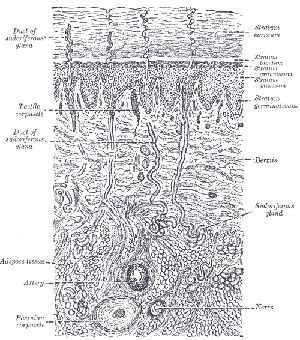What Is an Organ System? – Definition & Pictures
Organ System Defined
An organ system is a group of anatomical structures that work together to perform a specific function or task. Although we learn about each organ system as a distinct entity, the functions of the body’s organ systems overlap considerably, and your body could not function without the cooperation of all of its organ systems. In fact, the failure of even one organ system could lead to severe disability or even death.
The human body is composed of 11 different organ systems. These include the following:
- Integumentary
- Muscular
- Skeletal
- Nervous
- Circulatory
- Lymphatic
- Respiratory
- Endocrine
- Urinary/excretory
- Reproductive
- Digestive
Some scientists add the immune system to this list to make a total of 12 organ systems, but most people consider the immune system to be a part of the lymphatic system. You may also find texts where the lymphatic and immune systems are both included within the circulatory system, which would give us a total of ten organ systems. Still other sources separate the immune system, the vestibular system (the organs of balance) and the neurotransmitter system (chemicals that control our moods, memory, appetite, sleep, etc.) from the other organ systems, which would spawn 13 organ systems.
Regardless of how you separate the different organ systems within the human body, as you study these systems, keep in mind that an organ or structure that is included in one system may also be included in another. For example, the testes and ovaries produce hormones and are therefore part of the endocrine system; however, these same structures are also involved in reproduction and thus are included in the reproductive system.
Integumentary, Muscular and Skeletal Systems
The integumentary system includes your skin, hair, subcutaneous fat and nails. The integumentary system offers protection from the environment, provides form and individual recognition characteristics and aids in temperature and water regulation. Your skin is the site where vitamin D is generated. The integument, or skin, also serves as an anchor for sensory receptors (which are part of the nervous system) that detect pain, cold, warmth and pressure.
 |
The muscular system includes the skeletal muscles but excludes smooth and cardiac muscles, which are included in other organ systems. The muscular system provides locomotion and support, allows us to manipulate our surroundings and – due to its high metabolic activity – produces heat.
 |
The skeletal system is composed of bones, joints, cartilage, ligaments and tendons. Your skeleton provides structural support and protection for your internal organs. In cooperation with your muscular system, your skeletal system participates in movement and locomotion. Your skeleton also serves as a reservoir for calcium, phosphorus, magnesium and other minerals that are important in a wide array of physiological processes.
Nervous, Circulatory and Lymphatic Systems
The nervous system includes the brain, spinal cord, autonomic and somatic nerves (i.e., involuntary and voluntary nerves) and all sensory organs, including those that serve vision, smell, sensation, balance, hearing and taste. Your nervous system coordinates your movements and controls your responses to both external and internal stimuli. It serves as the storehouse and processing center for memories, it regulates mood and it provides the mechanisms for social interaction and development.
 |
The circulatory system includes your heart, blood vessels and blood. Your circulatory system is responsible for delivering oxygen and nutrients to every cell, tissue and organ in your body. It also conveys immune cells, electrolytes, hormones and other vital substances throughout your body. The circulatory system directly communicates with the lymphatic system, leading many to count these two systems as one.
 |
The lymphatic system is made up of the lymphatic vessels, which travel with your blood vessels, and the lymph nodes, where immune cells are produced. The lymphatic system returns a clear fluid called ‘lymph’ from your tissues and organs to your heart. Lymph is produced by the leakage of a small amount of fluid from your blood vessels into the surrounding tissues. The lymphatic system also transports fats absorbed from your intestine and carries immune cells from one place to another in your body.
 |
Respiratory, Endocrine and Urinary/Excretory Systems
The respiratory system encompasses the organs of breathing, which include your nose, pharynx (mouth), larynx (throat), trachea (windpipe), bronchi and bronchioles (airways), lungs and diaphragm. Your sinuses, which are lined by the same type of cells that line your upper airways, are included in the respiratory system. Your respiratory system is the principal site of gas exchange in your body. It is here that oxygen is absorbed into to your bloodstream and carbon dioxide is removed. Air moving through your respiratory system also provides you with the ability to vocalize (i.e., speak and sing).